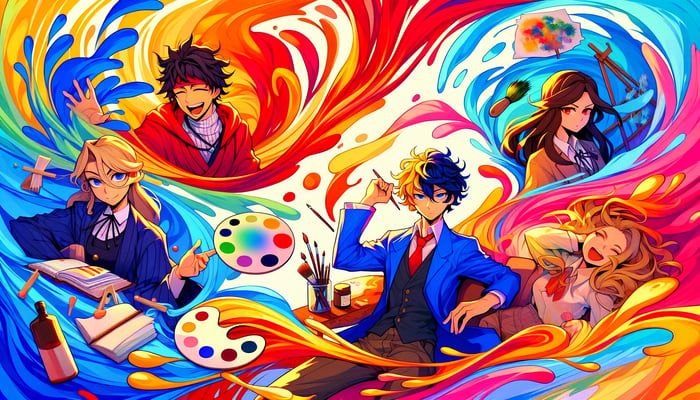How Artists Use Color Theory to Convey Emotion in Anime Scenes
Have you ever wondered why some anime scenes evoke such strong emotions? One of the reasons is the intelligent use of color theory by artists to convey a wide range of feelings. Whether it’s romance, tension, or suspense, the careful selection of colors can transform a scene’s emotional impact. Let’s dive into how color theory is skillfully applied in anime art to evoke emotions effectively!
Understanding Color Theory Basics
Color theory is a set of guidelines for using colors in ways that are aesthetically pleasing and elicit specific emotional or psychological responses. By understanding basics like the color wheel, warm vs. cool colors, and color harmony, artists can harness these tools to deepen storytelling in their anime scenes.
The Color Wheel
- Primary Colors: Red, yellow, and blue. These are the root of all other hues.
- Secondary Colors: Orange, green, and purple, made by mixing primary colors.
- Tertiary Colors: The in-betweens, like red-orange or blue-green.
Emotional Characteristics of Colors
Colors can evoke deep emotional responses and set the mood for a scene. Here are some common associations:
- Red: Intensity, passion, or danger.
- Blue: Calmness, sadness, or introspection.
- Yellow: Happiness, energy, or caution.
- Green: Growth, harmony, or envy.
- Purple: Mystery, nobility, or melancholy.
Techniques for Using Colors in Anime
Anime artists use color theory through various techniques to convey emotions:
Color Schemes
Color schemes such as complementary, analogous, and triadic help in creating visual harmony and tension:
- Complementary: Using opposite colors on the color wheel for dynamic and high-contrast scenes.
- Analogous: Uses colors next to each other on the wheel for harmonious, serene scenes.
- Triadic: Featuring three evenly spaced colors for vibrant, balanced results.
Symbolism
Colors are often used symbolically to represent thematic elements or characters' emotions, like using red to symbolically depict a character’s hidden anger.
Practical Tips for Using Colors in Your Own Art
If you're an aspiring artist, start by experimenting with these color techniques in your projects:
- Observe and analyze your favorite anime scenes, noting the color choices.
- Create mood boards or palettes before starting your art pieces.
- Experiment with different color schemes to see how they change your artwork’s emotional impact.
Conclusion
The next time you watch your favorite anime, pay close attention to how color is used. Understanding these artistic choices can deepen your appreciation and inspire your creative works. When it comes to custom products, think about how these color emotions can personalize your items—making them truly unique to the story you want to tell!
Explore our custom anime-style products to see how you can incorporate color theory into your own life.
